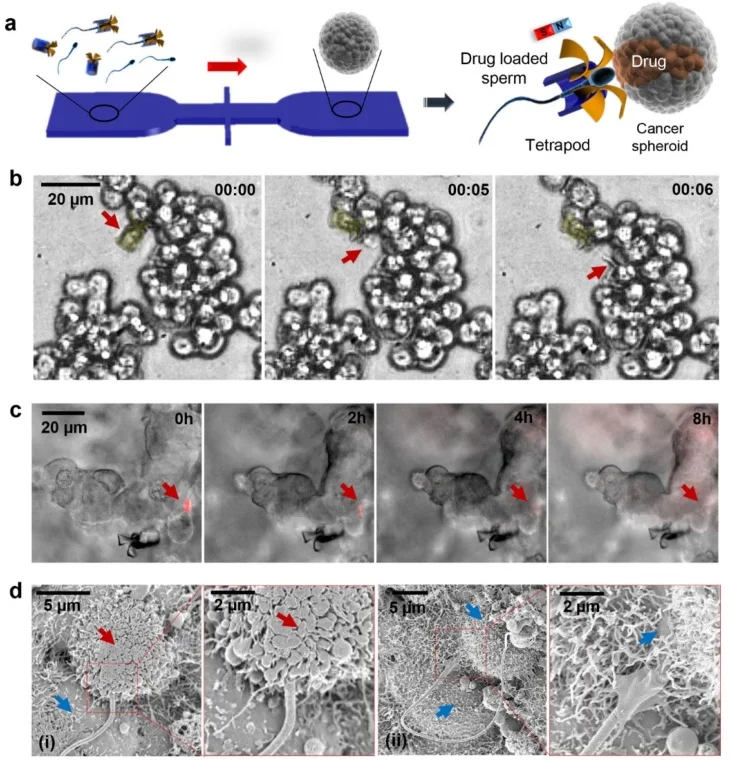The development of nano-robots will assist sperm in reaching and fertilizing eggs. The realm of medical technology is constantly evolving, a...
 |
| The development of nano-robots will assist sperm in reaching and fertilizing eggs. |
The realm of medical technology is constantly evolving, and one of the most fascinating advancements in recent years is the exploration of nano-robots designed to assist sperm in reaching and fertilizing eggs. These tiny machines, now often referred to as "nano-spermrobots," represent a groundbreaking approach to fertility treatments, offering hope to individuals and couples struggling with infertility.
Nano-spermrobots are minute robots typically crafted from materials like silicon, metal, or polymers. Despite their small size, these robots are equipped with advanced technologies that enable them to play a crucial role in the fertilization process. Their primary function is to assist sperm in overcoming the natural obstacles within the reproductive tract, ensuring that they reach the egg with greater speed and precision.
 |
| The medical experiement of spermbots. |
This is achieved through the use of micro-motors that propel the nano-spermrobots toward the egg, as well as sensors that guide their movement and ensure they stay on course. Additionally, these nano-robots are equipped with micro-tools designed to help penetrate the egg, further enhancing the chances of successful fertilization.
The potential benefits of nano-spermrobots in fertility treatments are immense. For many, the journey to parenthood is fraught with challenges, often requiring invasive procedures that can be both physically and emotionally taxing. Nano-spermrobots offer a less invasive alternative, potentially reducing the need for such procedures and making the process of assisted reproduction more comfortable for patients.
Furthermore, these tiny robots can deliver sperm directly to the egg with remarkable precision, which could significantly increase the success rates of fertility treatments. This precision also means that fewer sperm may be needed for fertilization, potentially reducing the risk of multiple pregnancies, which can carry additional health risks for both the mother and the babies. |
| The spermbots are also considered to be safer than microalgae/bacteria. |
The manipulation of human reproduction is a deeply sensitive area, and the long-term effects of using nano-spermrobots are still unknown. As this technology continues to develop, it will be essential for scientists, ethicists, and policymakers to carefully weigh the potential benefits against the risks and ethical implications.
 |
| Cultivation of embryos and reimplantation of the embryo into the uterus. |
Looking to the future, nano-spermrobots have the potential to become a standard tool in fertility treatments, offering new hope to millions of individuals and couples around the world. However, it is crucial that the development of this technology is approached with caution.
As with any medical innovation, the ultimate goal should be to improve patient outcomes while minimizing risks. With ongoing research and careful ethical oversight, nano-spermrobots could one day revolutionize the field of reproductive medicine, helping more people achieve their dreams of starting a family.





